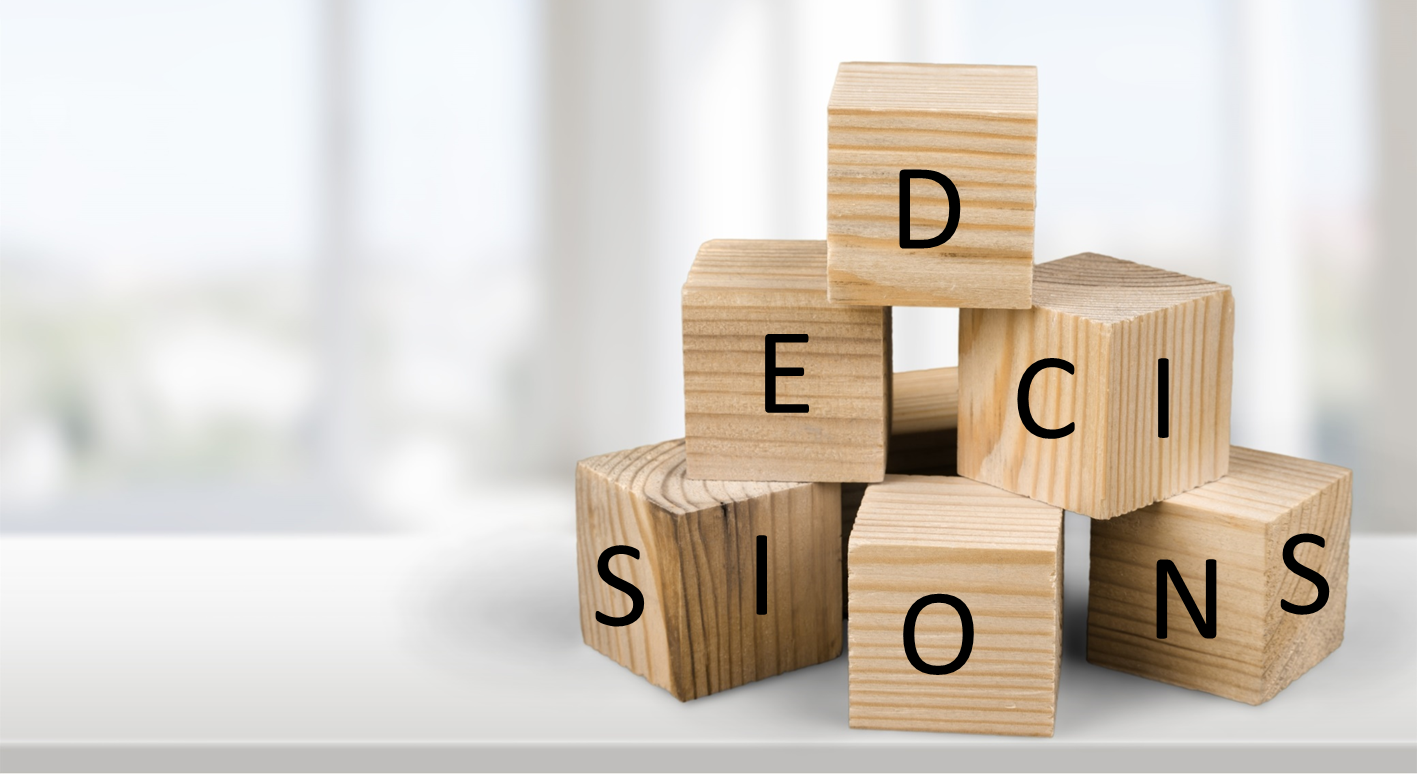 Elon Musk used this method of thinking to transform Tesla into a supply chain powerhouse and launch low-cost rockets into space. Reid Hoffman positioned Netflix to dominate the online streaming industry with nearly 200 million subscribers by leveraging this ancient thought process. What is it? Reasoning from first principles, and when applied to decision making, can help to supercharge and simplify how you make decisions. The case for something simpler As a new manager, I struggled with how best to make decisions, quickly, consistently, and with the right impact. When should I use intuition? Data? Analytical tools? Consult others for the input? Looking back on the results of my decisions in my first few years as a manager, I knew that I could do better. I wasn't getting the results I wanted and it was taking me too long to make decisions, even the simple ones. I distinctly remember my frustration coming to a head on a bright and sunny Iowa summer evening about ten years ago when I blew threw a red light, so consumed was I thinking about the sheer number of decisions I had to make the following day. For me, this was a problem that needed solving and as an engineer, I felt well equipped to approach decision making as a problem for which first principles reasoning could be used to solve. Aristotle's axiom Musk and Hoffman both employed a first principles way of thinking, initially conceived by Aristotle more than two thousand years ago. For me to re-engineer how I made decisions, this meant taking a step back and pressing pause on my knowledge, analogies, biases, and other factors which influenced my decision making to consider the most basic building blocks of any decision. Decision building blocks: tear it down and build it up Let's start with a definition. A decision is simply something you choose. Most decisions we make are done so automatically and we prefer it that way. Decision will power is finite and every time we have to engage the logical and thinking parts of our brain to consciously make a decision, we chip away our ability to make a good decision next time. Daniel Kahneman does a magnificent job detailing the two models of thought (System 1 - fast, automatic, and System 2 - slow, logical) in his book Thinking, Fast and Slow. I knew that I needed to keep as many decisions as possible in the automatic realm of System 1 and only engage System 2 when it really counts. This could be done by identifying the type of decision, but first I needed to consider the most basic elements of a decisions. After more research than I care to recount, I came to the conclusion that all decisions have three common core elements: people, impact, and complexity.
It all comes down to risk As started to rethink how I made decisions, I needed to consider how these three elements fit together in the context of risk to decide how I wanted to engage with each decision I encountered. Just a few people, low impact to my business, and a very simple A or B choice? That's a low risk decision. I needed to make a decision and move on. These are the majority of decisions I encountered and unfortunately, consumed most of my time. Policy or strategic decisions tended to involve more people, have a greater impact, and were more complex. These were medium risk decision. High risk decisions were the ones where I knew the stakes were high. Often involving a lot of people, with a big impact, and more complex (including plenty of analytics), these were the decisions I knew required more of my energy and focus to do well. Decisions reconstructed: how it all fits together As shown in the triangle, here's how the first principles model for decision making fits together. The base consists of the number of people involved in the decision, the impact the decision will have on the business, and the complexity of the decision. Once I got a feel for the magnitude of these elements, I could then determine if the decision was low risk, medium risk, or high risk. If you're like me and the majority of managers or business leaders, you spend far too much time on low risk decisions as these are the most common. To make more, better, and faster decisions, you need to flip your thinking. Keep the low risk decisions on autopilot and make them fast. Place the effort where it counts, and spend more of your time on medium and high risk decisions. 3 key takeaways 1. First principles can be used to break down a problem into its most basic elements. When applied to decision making, it can help you make more, faster, and better decisions. 2. Decisions are built on a foundation of three common elements: people, impact, and complexity. 3. The magnitude of these elements dictate whether a decision is low risk (autopilot), medium risk (think about it), or high risk (detailed analysis). Identify the type of decision before investing time to solve it. Here's to more, faster, and better decisions and driving great results! -luke Enjoy this post? Please subscribe, like, and share!  The pandemic has changed everything Rarely in modern history have so many critical decisions been made by so many people. The pandemic has placed an inordinate amount of pressure on societies, leaders, families, and individuals to make decisions. Some of these are decidedly short-term in nature, dealing with day-to-day challenges faced as a result of the immediate impacts of the pandemic, while others are medium-term as we consider what the world will look like post-pandemic. All are incredibly difficult and cast in an unexpected light. Values-based decision making can help relieve some of this pressure by helping you make decisions faster, more consistently, and with precious mental energy dedicated to the decision and its outcome. Values are guiding big decisions Those in public office have to decide, almost on a daily basis, which measures to impose or adjust in response to the spread of Covid-19 in their jurisdiction. As is evidenced around the world, these decisions can be based on data, intuition, facts or belief, and in all cases, reflect the values, public or private, of the decision makers. Business leaders have to adjust to the new, sudden, and hopefully short-term reality: their customers are now confined at home. For some, this means business as usual though for most, drastic measures have been necessary to keep their business solvent. Values-based decision making is more important than ever for these leaders to navigate this new reality, even if it means that their values have to shift as a result of the pandemic. Families are equally caught in the mix of high-pressure decision making as parents decide whether or not to home school their children, to work at home or return to the office, to stay in the city or move to a more rural area. Defined and prioritized values can help with these decisions. Values are guiding big decisions. What’s your value system? 3 steps to identifying and prioritizing your values Here are the three steps to define your own prioritized value system.
Under conditions of extreme pressure, decision making has a tendency to become fast and loose. Use values-based decision making – gut feel or data-backed – to relieve some of this pressure and keep your decisions tight. Here's to better decisions and driving great results! -luke Don't forget to download the free tool and subscribe! Thanks for reading. Over the next few weeks, I want to share some of the tips and tools that I've compiled to help with making high-quality decisions, and it all starts with values.
Strategy defines where you’re going; values define how you’ll get there. Why use values when making decisions? At the best of times, making decisions for your business can be infused with anxiety and uncertainty. Layer on a pandemic and the pressure to make the right decision can feel overwhelming. But making decisions becomes far easier when you know what your values are. These are the things which define who you are at your core, both personally and professionally. You make better, higher quality decisions when your values are clear. In general, decisions are a whole lot easier and less time consuming when you know what’s most important to you. From my upcoming book, Driving Great Results: You must explicitly define and know your values to ward off inconsistencies in how you make decisions, and to minimize mental fatigue as a result of continually remaking or second-guessing your decisions. Prioritizing your values This can be one of the most challenging steps in cementing your values system. In making any decision, different factors will come into play and the strength of one particular value verses another can easily change the outcome. For example, you will choose to invest your money quite differently if short-term profitability is valued more than sustainable growth. All values are not created equal and in prioritizing your values, you are consciously determining how you want to run your business. Reassess – values change over time People change, situations change, and values change. As a self-admittedly pretty selfish guy before I had kids, I’m amazed at how quickly and easily I’ve had to adjust my value system once I realized that the needs of my family come first. Life experiences have the potential to influence and alter your value system and it’s important to periodically reflect on your values and how you prioritize them, and adjust accordingly. Takeaway When you know your values and what’s important to you, you’ll be happier with the decisions you make and people will always know where you stand. Stay tuned for Wednesday's post - 3 steps to defining your own prioritized value system. -luke |
subscribeArchives
February 2021
Categories |


 RSS Feed
RSS Feed